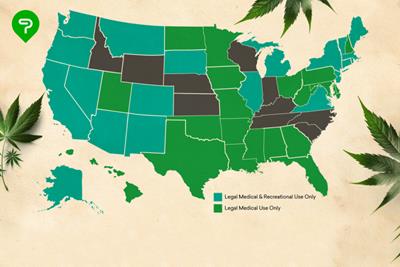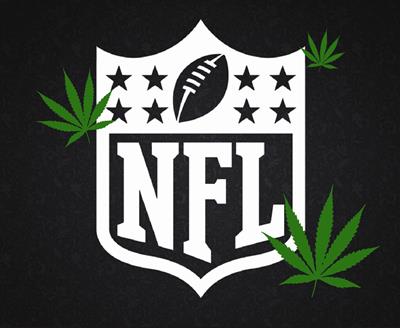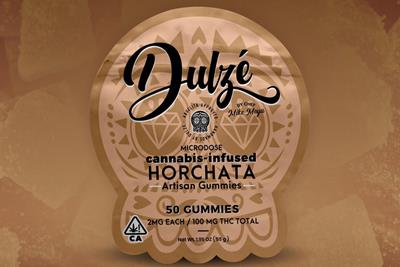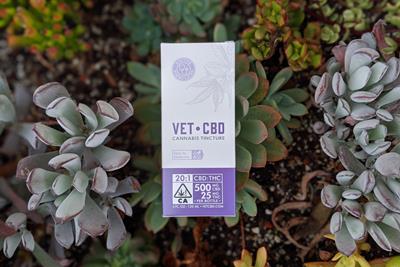
Monday July 27, 2015
 News
News
Americans have been taught to look at our major league sports athletes as revered and respected role models. Many Americans have also been taught that marijuana use is dangerous, debilitating and just plain wrong. This dichotomy has resulted in the need for U.S. athletes to hide their marijuana use from the general public and sports organizations, especially the NFL, as if it were a serious offense.
While highly addictive and dangerous narcotic and opiate drugs are regularly prescribed to athletes to control pain, sports organizations have vigilantly frowned upon players’ use of marijuana to ease pain resulting from major injuries like fractures, torn ligaments, broken bones and brain trauma. But, as Bob Dylan foretold decades ago, “the times they are a changin’.” As marijuana gains credibility as an effective and safe medical intervention, sports teams’ policies on players’ marijuana use can be expected to follow suit and become less stringent in the future.
Top-ranking athletes are treated much like thoroughbred racing horses and expected to bring in billions of dollars in revenue each year for major league owners and investors. Like racehorses, gifted athletes have a limited amount of time in which they can perform at their best and garner that kind of cash before their bodies break down. Consequently, high-profile players are pushed to physical and mental extremes of endurance, strength and performance while team managers are expected to enforce strict rules regarding substance use and publicly penalize players for breaking those rules. Marijuana is one of the forbidden substances on the list. Having said that, marijuana can be one of the most beneficial medications for sports-related injuries on the market, and one with the least damaging side effects.
Former Broncos tight end Nate Howard is an outspoken advocate for marijuana use in the NFL, writing in an article for The New York Times, “VIRTUALLY every single player in the N.F.L. has a certifiable need for medical marijuana.” Howard cites the standard of pain management practices in the NFL as a routine of “pain pills and pregame injections,” but not all athletes favor Big Pharma interventions.
The NFL’s major concern about cannabis seems to be that marijuana use will inhibit performance on the field. Evidence contradicts that claim, and many top players who medicate with marijuana demonstrate consistent, winning gameplay year after year. Many NFL players have been smoking weed since their teens, and if marijuana affected their performance they never would have made it to the NFL. As an example, Howard cites Cleveland Browns wide receiver John Gordon who led the league with 1,646 receiving yards in 2013 before being benched the following September for the entire 2014 season after testing positive for marijuana.
U.S. Olympian and record-breaking medal winner Michael Phelps drew a media craze in 2009 after a photo surfaced of him smoking marijuana. Phelps officially apologized in a formal statement decrying his “bad judgement” as protocol demanded. His apology, however, did nothing to diminish the fact that his marijuana use did nothing to affect his performance ability. The World Anti-Doping Agency, who oversees Olympic substance testing, uses a threshold of 150 nanograms of carboxy THC per milliliter of urine. Until September 2014, the NFL’s threshold was just 15 nanograms, now 35 nanograms, while Major League Baseball uses a threshold of 50 nanograms (USA Today).
Why does the NFL continue to enforce archaic limits on marijuana-based medication, even though it’s widely considered the most physically and mentally damaging major sport in the United States? Fox News reported that as of November 2014, “more than 4,500 retired players have filed suit against the NFL claiming that the league downplayed, dismissed and even covered up knowledge of the long-term neurological damage associated with repetitive concussions.” Clinical research shows that one of the 85 known active cannabinoids in marijuana “acts as a neuroprotectant, so in the parlance of pharmaceutical sciences, we could be using that as a prophylaxis against repetitive concussive injury.” (Fox News)
There is hope on the horizon for the NFL’s current and retired players’ right to safe and effective marijuana-based treatment. KannaLife Sciences recently partnered with retired NFL defensive lineman Marvin Washington in a campaign to spread awareness of marijuana’s potential sports applications, saying, “This is for protection of the current players and future players in the NFL and college. This just doesn't cover the former players -- the things that are happening in our lab are gonna cover everybody that plays a contact sport. It's gonna make the game safer.” (Fox News)







